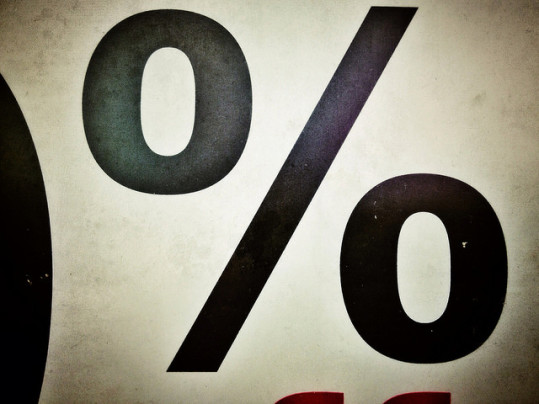For prospective home buyers, price increases can be complicated. When you’re looking for a house to buy, you want prices to stay low so you can find a great deal but – after you’ve signed the papers and moved in – your opinion quickly changes. Once you own the house, any increase in the value of the property is welcome news. The higher, the better. However, there is one way rising prices can benefit buyers before they’ve closed the deal. For example, prices rise faster in markets where there aren’t enough available homes for sale to meet buyer demand. In these markets, buyers will find more competition and declining affordability conditions. On the other hand, those same price increases also mean current homeowners are gaining equity and may be more likely to put their home up for sale, knowing they can sell it at a good price. That is especially true in today’s market. In fact, according to a new report from Black Knight Financial Services, the number of underwater homeowners has fallen from 29 percent in 2012 to 5.6 percent at the end of the first quarter of this year. That improvement means a lot of homeowners who may’ve been waiting to regain positive equity before selling their home may now be ready to sell. And, as more homes become available for sale, current buyers will not only have more homes to choose from but the overall market will be more balanced, helping affordability conditions. More here.
Archive for July 2016
Survey Asks What Makes A House A Home
There are plenty of surveys asking prospective home buyers what features are most important to them when looking for a house to buy. Most of them find buyers naming storage space and energy efficiency among their top priorities. But extra closets and low energy bills aren’t things normally associated with making a new house feel like home. So what does make a house a home? A recently released survey from IKEA tries to answer that question by exploring how people feel in their house and what makes them feel most at home. For example, 63 percent of respondents said they cook to create the feeling of home and associate certain foods with being at home. Among younger respondents, playing music was an important part of achieving that feeling, with 65 percent of respondents between the ages of 18 and 29 saying they play music to get a homey feeling. Smells and sounds play a big role in what makes us feel safe and comfortable but social interaction and privacy are also important. Nearly 50 percent of respondents said home is where they have their most significant relationships while, at the same time, 25 percent said they’d choose to spend an hour alone if they had one to spare. Overall, survey respondents seemed to feel experiences were more important than things and wanted their homes to reflect their desires and give them a place to do what they most love. More here.
Household Growth Is On The Rise
Following the housing crash, the homeownership rate fell from its peak and the number of Americans forming new households slowed. But according to a new report from Harvard University’s Joint Center for Housing Studies, household growth is once again on the rise. In fact, the report shows that the pace of household growth increased from 653,000 in 2013 to 1.0 million in 2014 and1.3 million in 2015. That’s good news for the health of the housing market, especially since young Americans are expected to form 2 million households per year over the next 10 years. Chris Herbert, managing director of Harvard’s Joint Center for Housing Studies, says there are still some lingering challenges holding buyers back, however. “Tight mortgage credit, the decade-long falloff in incomes that is only now ending, and a limited supply of homes for sale are all keeping households – especially first-time buyers – on the sidelines,” Herbert said. “And even though a rebound in home prices has helped to reduce the number of underwater owners, the large backlog of foreclosures is still a serious drag on homeownership.” Still, evidence shows buyer demand is high and homeownership continues to be a goal for most Americans. As Herbert says, “The question is not so much whether families will want to buy homes in the future, but whether they will be able to do so.” More here.
Money Matters Hold Back Housing Sentiment
The number of Americans who say it’s a good time to sell a house rose 5 percent in June, according to Fannie Mae’s monthly Home Purchase Sentiment Index. That represents an all-time survey high. Combined with a 3 percent bump in the number of survey respondents who said it was a good time to buy a house, the results seem to show an increasing optimism about the real estate market. But though participants may see opportunity, concerns about their personal income and the direction of the overall economy may be holding them back. In fact, money worries led to a 2.1 percent drop in overall sentiment from the previous month’s highs. “The HPSI’s pullback in June from last month’s survey-high reading suggests a slight weakening in the 12-month outlook for housing activity,” Doug Duncan, Fannie Mae’s senior vice president and chief economist, said. “Pending home sales have pulled back in the face of continued home price growth, and we’re seeing some softening in the higher priced components of the market. Growing pessimism about the overall direction of the economy gives us further pause as it now stands at the highest level we’ve seen in our National Housing Survey in the last two years.” According to Duncan, real improvement will require more affordable homes available for sale and a significant boost in Americans’ income growth perceptions. More here.
Mortgage Rates Drop To Near Record Lows
According to the Mortgage Bankers Association’s Weekly Applications Survey, average mortgage rates fell to their lowest level in more than three years last week. And, in the case of jumbo loans, rates fell to lows not seen since 2011. Michael Fratantoni, MBA’s chief economist, told CNBC that financial market volatility is behind the rate drop. “Mortgage rates have been low for years, but the impact of Brexit has brought us close to record lows once again, with jumbo rates already at their lowest levels, giving more borrowers a larger incentive to refinance,” Fratantoni said in reference to Britain’s exit from the European Union. In fact, refinance activity – which is more sensitive to rate fluctuations – surged last week, climbing 21 percent from the week before. With rates down across all loan categories, including FHA loans and 15-year fixed-rate mortgages, that’s no surprise. Purchase activity also benefited from falling mortgage rates. The seasonally adjusted purchase index was up 4 percent and is now 23 percent higher than the same week one year ago. The MBA’s weekly survey has been conducted since 1990 and covers 75 percent of all retail residential mortgage applications. More here.
Low Inventory Presents Challenge For Buyers
Home buyers looking to buy a house this year have been met with a more challenging housing market than in years past. Following the housing crash, supply outweighed demand and the market favored buyers. With more homes than buyers, prices were low and buyers had all the negotiating power. This year, on the other hand, higher home prices, fewer choices, and more competition from other buyers have led to increasing concerns about affordability and the likelihood of finding the right house. According to a recent gathering of housing economists at the annual convention of the National Association of Real Estate Editors, low inventory is at the root of all of these issues. That’s because, when there are more buyers than there are homes for sale, home prices increase and sellers have the upper hand. Speakers at the convention, including the National Association of Realtors’ chief economist, Lawrence Yun, and Realtor.com’s, Jonathan Smoke, pointed to inventory as key to balancing the market and helping moderate home price increases. “One thing holding back the market is supply,” Smoke said. “Inventory continues to be constrained despite demand.” Yun agreed, calling inventory, “grossly inadequate.” Fortunately, high buyer demand and still-low mortgage rates have helped affordability levels and kept home sales numbers up despite low inventory in many markets. More here.
Metro Housing Markets Improve Year-Over-Year
According to Freddie Mac’s Multi-Indicator Market Index – which measures how far individual housing markets have rebounded since their post-recession lows – nearly 100 percent of the nation’s top metropolitan areas have shown year-over-year improvement. Additionally, 49 of 50 states have also posted positive annual gains. Len Kiefer, Freddie Mac’s deputy chief economist, says the nation’s housing markets continue to improve and, if global economic uncertainty keeps mortgage rates low for an extended period, there may be more gains to come. “Seven years into the recovery from the Great Recession, most of the nation’s housing markets remain below their historical benchmarks, but continue to grind higher month-by-month,” Kiefer said. “Nationally, MiMi in April 2016 is 84.1, a 7.37 percent year-over-year increase and the 48th consecutive month of year-over-year increases … If global factors like the Brexit put significant downward pressure on long-term mortgage rates, the U.S. housing market could benefit from increased affordability, helping to partially offset the impact of house prices, which are rising around six percentage points year over year nationally.” Compared to last year, the most improved metro areas included Orlando, Tampa, Denver, Cape Coral, and Portland. More here.







